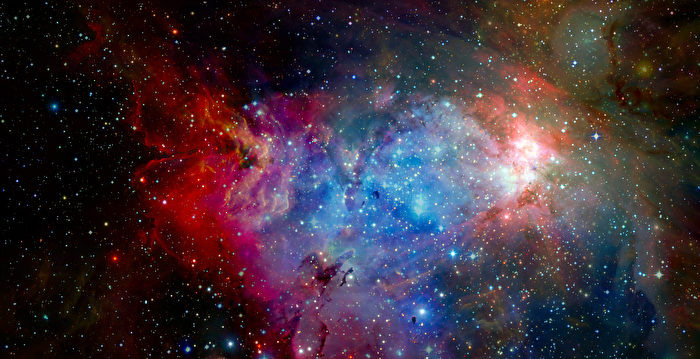[Epoch Times November 05, 2021](Epoch Times reporter Gao Shan compiled a report) As astronomer Carl Sagan once said, we are indeed made of stellar material.
According to CNN, astronomers have discovered an element that exists in our bodies for the first time in a galaxy more than 12 billion light-years away, that is, the fluorine contained in our bones and teeth. .
The lead author of this study Maximilien Franco (Maximilien Franco) is a postdoctoral researcher in astrophysics at the University of Hertfordshire in the United Kingdom. He said in a statement: “We all know fluorine, because the toothpaste we use every day contains fluorine. But we don’t even know which type of star produces most of the fluorine in the universe!”
The elements found in our solar system, the earth and even our own bodies originate from the core of stars. They were released during the explosion of the star. But the mystery of how fluorine is produced in these stars has not been solved.
Researchers used the Atacama Large Millimeter/submillimeter Array of telescopes in Chile to detect the presence of fluorine in an extremely distant star-forming galaxy.
The origin of massive stars
In the gas cloud of the NGP-190387 galaxy, fluorine exists in the form of hydrogen fluoride. It takes 12 billion years for the light from this galaxy to reach us. Therefore, when astronomers observe this galaxy, what they see is what the universe looked like when it was only 1.4 billion years old.
Researchers say that throughout the universe, stars that release fluorine gas are likely to have a short lifespan and die very early. Wolf-Rayet Stars may be their source. These generated stars are incredibly large, but they can only exist for a few million years-compared to the 13 billion years of our universe, which is a very short timeline.
Only some massive stars will evolve into Wolf-Rayet stars near the end of their lives. This stage will last for hundreds of thousands of years, but in the life cycle of a star, it is very short. Out of 100 million stars, only one is massive enough to become a Wolf-Rayet star.
Previously, researchers believed that Wolf-Rayet star may be the source of fluorine, and this direct detection confirmed this.
Franco said: “We have proved that Wolf-Rayet stars are one of the most massive stars known. They may explode violently when they die, and this helps us to some extent. Healthy teeth.”
The study, published in the journal Nature Astronomy on Thursday (November 4), details these findings.
Fluorine and the early universe
Scientists believe that other potential sources of fluorine include Asymptotic Giant Branch Stars (Asymptotic Giant Branch Stars), which are pulsating stars that are several times the mass of the sun. However, the evolution of these celestial bodies takes billions of years, and it takes too long to explain the amount of fluorine detected in distant galaxies.
The co-author of the research report, Professor Chiaki Kobayashi of the University of Hertfordshire in the United Kingdom, said in a statement: “For this galaxy, it only takes tens of millions of years or even hundreds of millions. In a year’s time, its fluorine content is comparable to that of the stars in the Milky Way, and the stars in the Milky Way are 13.5 billion years old. This is a completely unexpected result.” “Our measurement of fluorine The source has added a whole new range. This question has been studied for twenty years.”
The discovery of fluorine in such a distant galaxy has expanded the influence of this element. Before this discovery, it had only been found in our Milky Way and its neighboring galaxies, as well as some distant quasars, or bright celestial bodies powered by supermassive black hole engines at the centers of certain galaxies.
At the same time, this discovery attributed fluorine to an element that existed in the early universe.
The researchers look forward to using the very large telescope currently under construction in Chile to observe the galaxy. It is expected that the observation will begin in 2027, which will reveal more mysteries about the NGP-190387 galaxy.
Editor in charge: Ye Ziwei#
.
